Kindergarten Program
The kindergarten program at INschool ensures a wholesome and meaningful childhood for children. The Kindergarten comprises four levels:
LEVEL 1
Children aged 18 – 36 months.
LEVEL 2A
Children aged 3 - 4 years.
LEVEL 3
Children aged 4 - 5 years.
Children aged 5 - 6 years.
CURRICULUM OVERVIEW
Based on the five development areas in early childhood education, INschool has built a curriculum adhering to the 2C (Body Care, Mind Care) and 2D (Language Development, Skill Development) standards.
2C includes: Cognitive development and physical development.
2D includes: Encompasses skill development and language development.
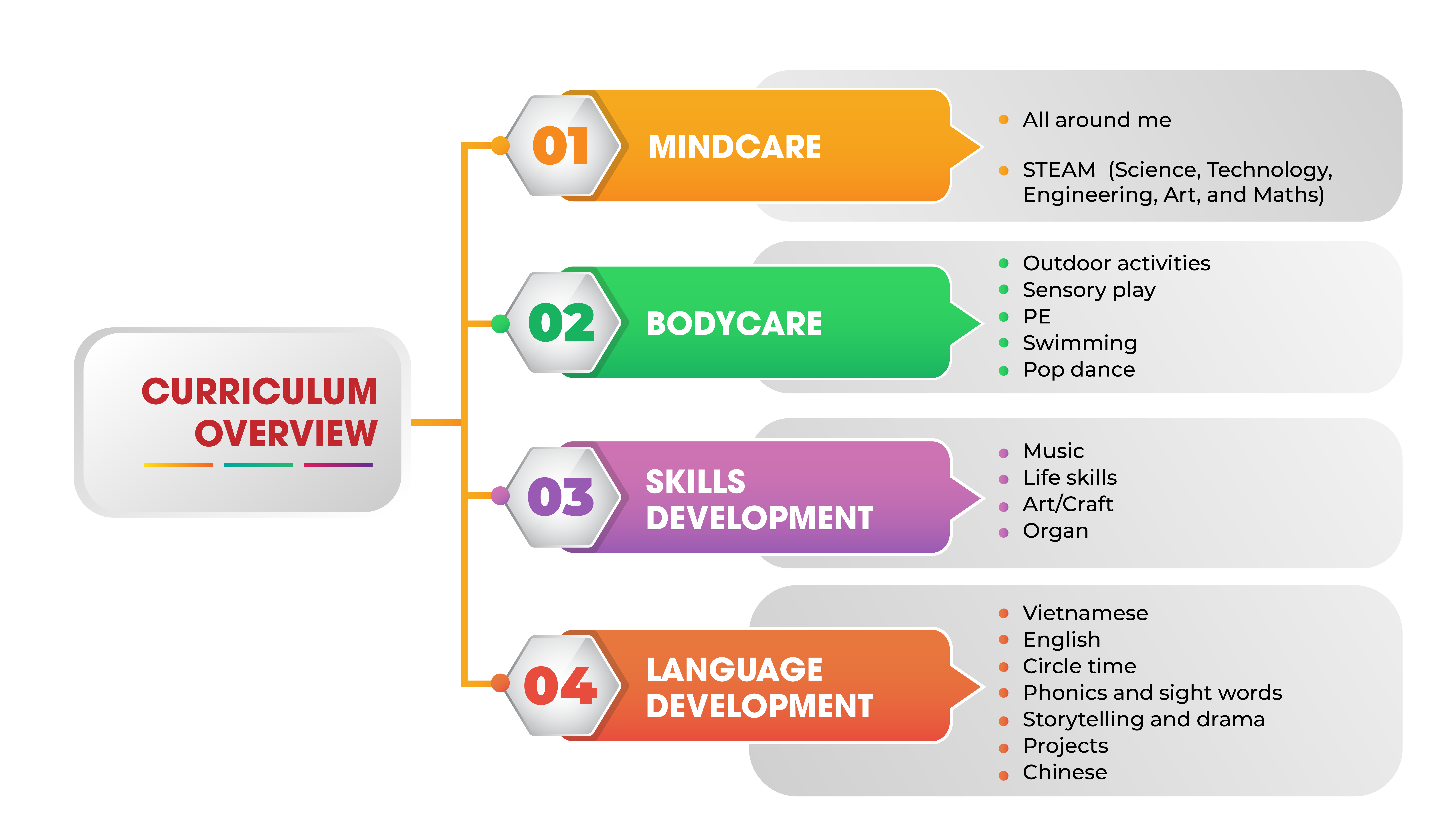
Throughout the Kindergarten level, children will learn and develop in areas such as:
-
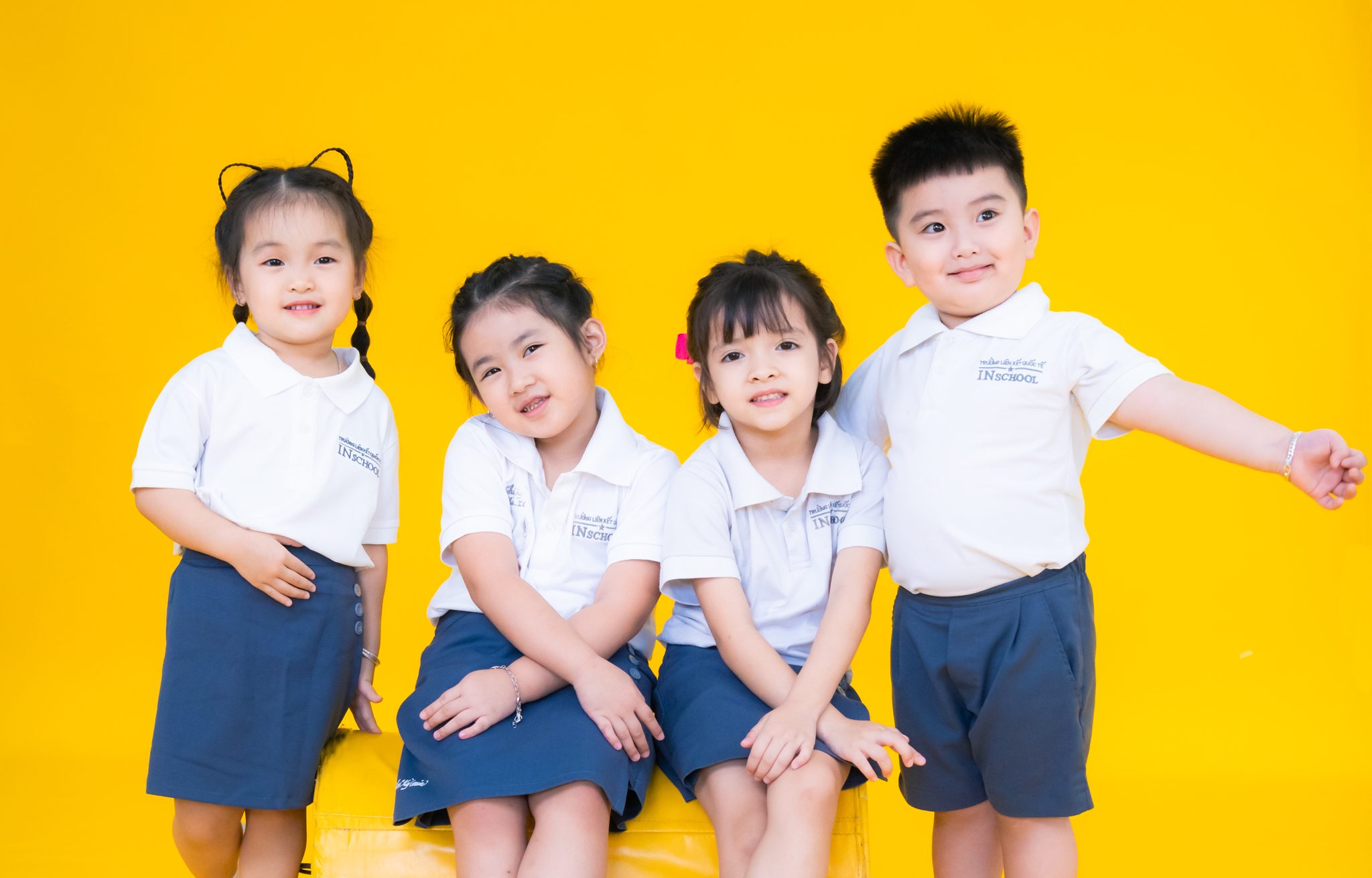 #Development
#DevelopmentCognitive Development:
- Recognizing shapes and patterns of objects around them.
- Learning to read and write alphabets, and simple mathematics in English and Vietnamese.
- Stimulating potential and passion for mathematics, developing quicker reflexes for practical application.
- Being creative with toys or designing favorite shapes with available materials.
- Exploring and expressing creativity in the arts, participating in painting activities to develop senses and aesthetics.
- Understanding the production and operation of familiar products, thereby learning basic assembly and increasing creative thinking and problem-solving skills related to technology.
- Recognizing shapes and patterns of objects around them.
-
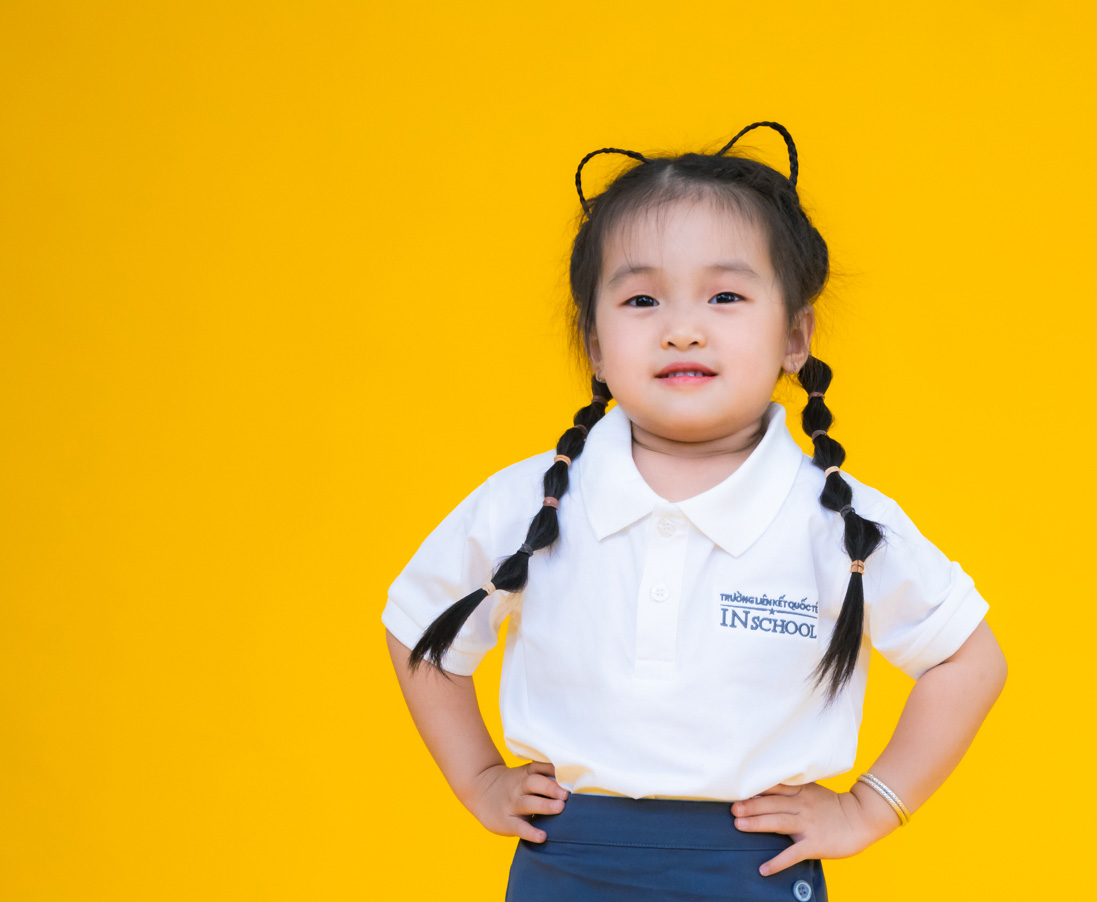 #Development
#DevelopmentPhysical Development:
- Running safely on both feet, climbing stairs independently, and learning to hold onto stair railings.
- Becoming self-sufficient in daily activities (e.g., fetching water without spilling, brushing teeth, eating proficiently with a spoon) and self-care under adult supervision.
- Enhancing fine and gross motor skills.
-
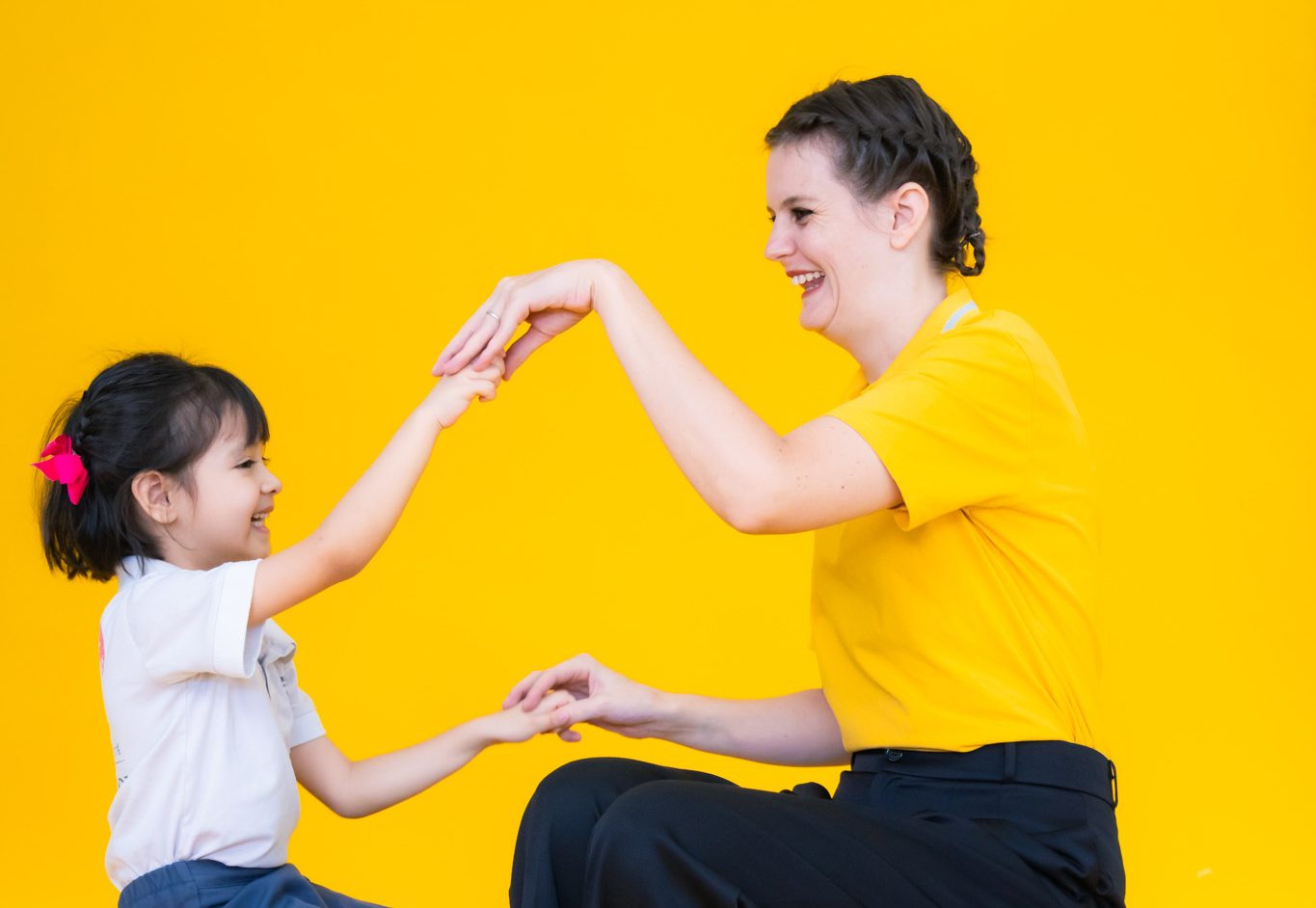 #Development
#DevelopmentSkill Development
- Expressing emotions like happiness, sadness, fear, anxiety, seeking comfort and safety, wanting consolation when needed.
- Accepting others’ requests, sharing, waiting for their turn to play, sometimes needing teacher assistance.
- Recognizing dangers, reacting to situations, and seeking help from others.
- Showing concern for classmates, participating in group activities, establishing relationships with others, and expressing affection for special people.
- Accepting and recognizing the value of praise for achievements, showing responsibility in assigned tasks.
- Cooperating according to classroom rules and self-restraining from inappropriate actions, discerning right from wrong through teacher explanations.
-
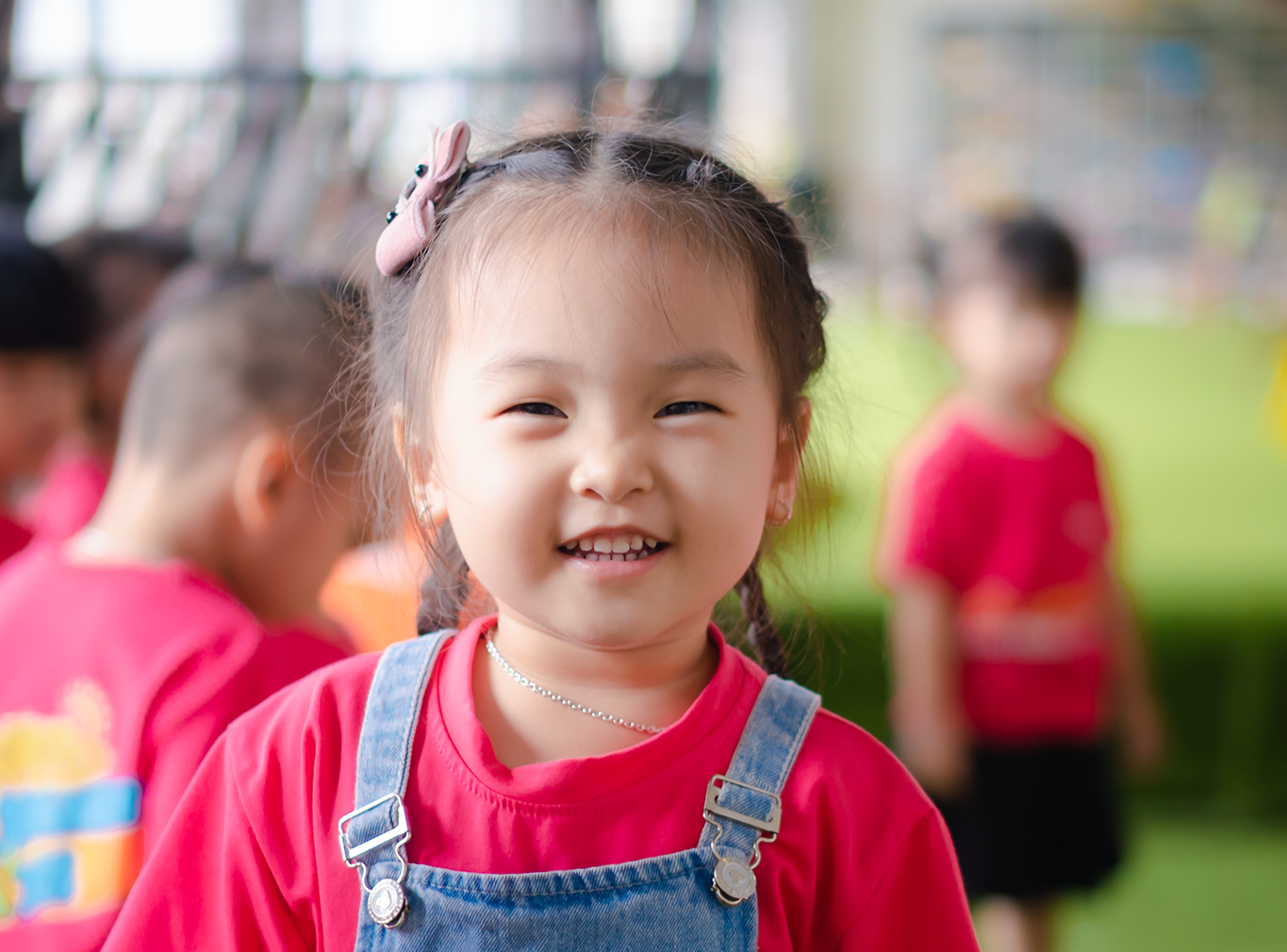 #Development
#DevelopmentLanguage Development
- Attentively listening to stories, remembering them, and recalling main ideas or repetitive phrases and rhymes.
- Memorizing favorite songs or narrating short stories.
- Quickly learning new words and forming longer sentences into paragraphs, switching conversational topics in Vietnamese, English, and Chinese.
- Practicing final sounds in English words (e.g., “ing” in going, “s” in cats).
CURRICULUM DIFFERENCE
With foundational, bilingual, and international programs differing in the following aspects:
• Foundation system: Children spend about 10% of their time learning and engaging in activities in a foreign language. The remaining 90% is in Vietnamese.
• Bilingual system: Equal split with 50% of the time in a foreign language and 50% in Vietnamese.
• International system: 80% of activities and learning are in a foreign language, with the remaining 20% in Vietnamese.
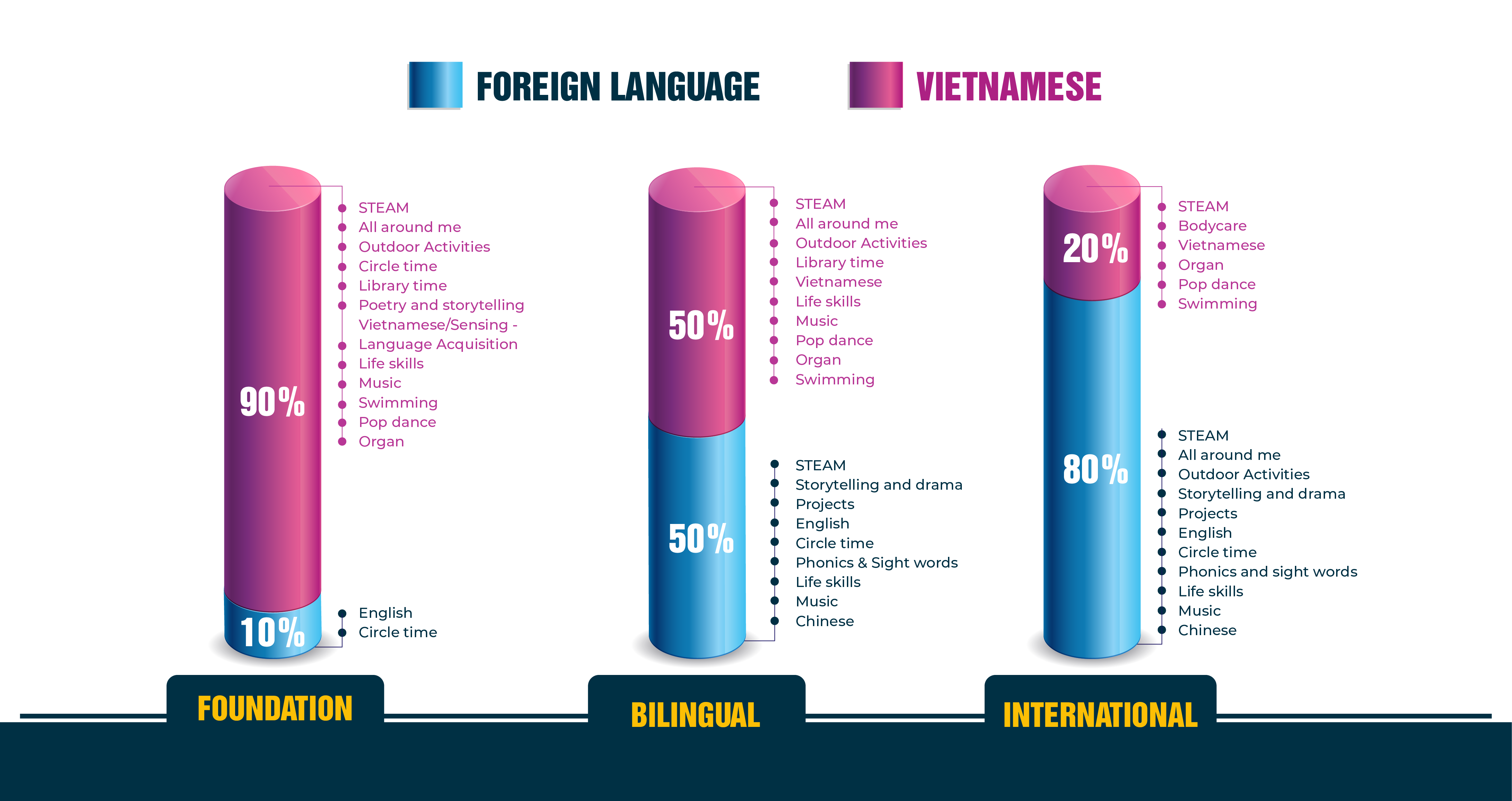
SELF-IMPLEMENTATION THROUGH THE LIFE SKILLS PROGRAM
Particularly at INschool, students are equipped with essential life skills from an early age to aid in their self-development and personal growth.


